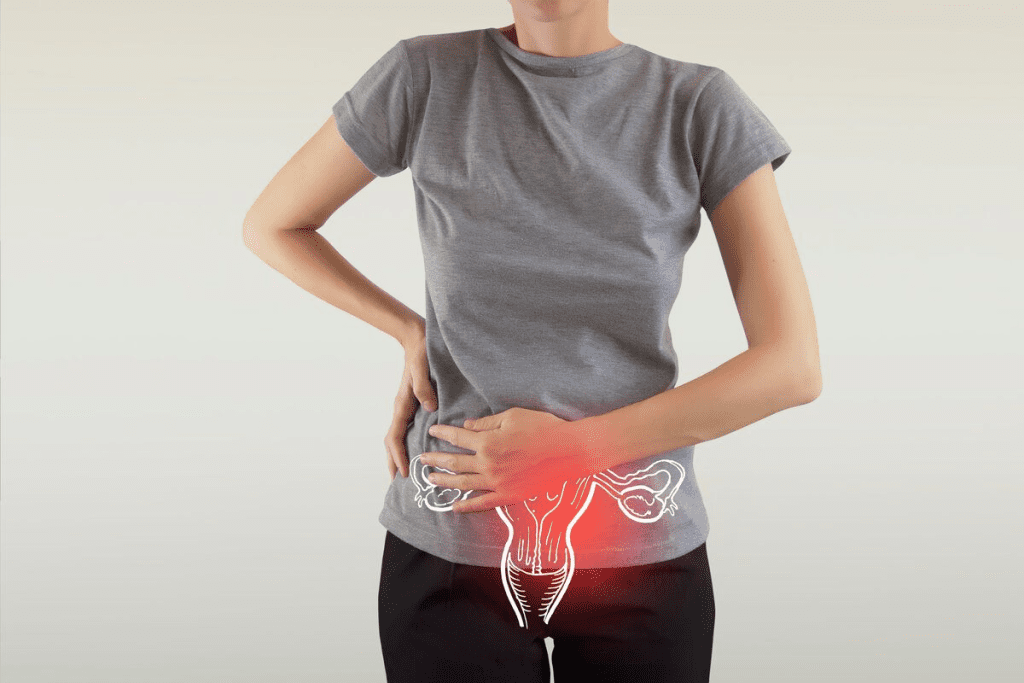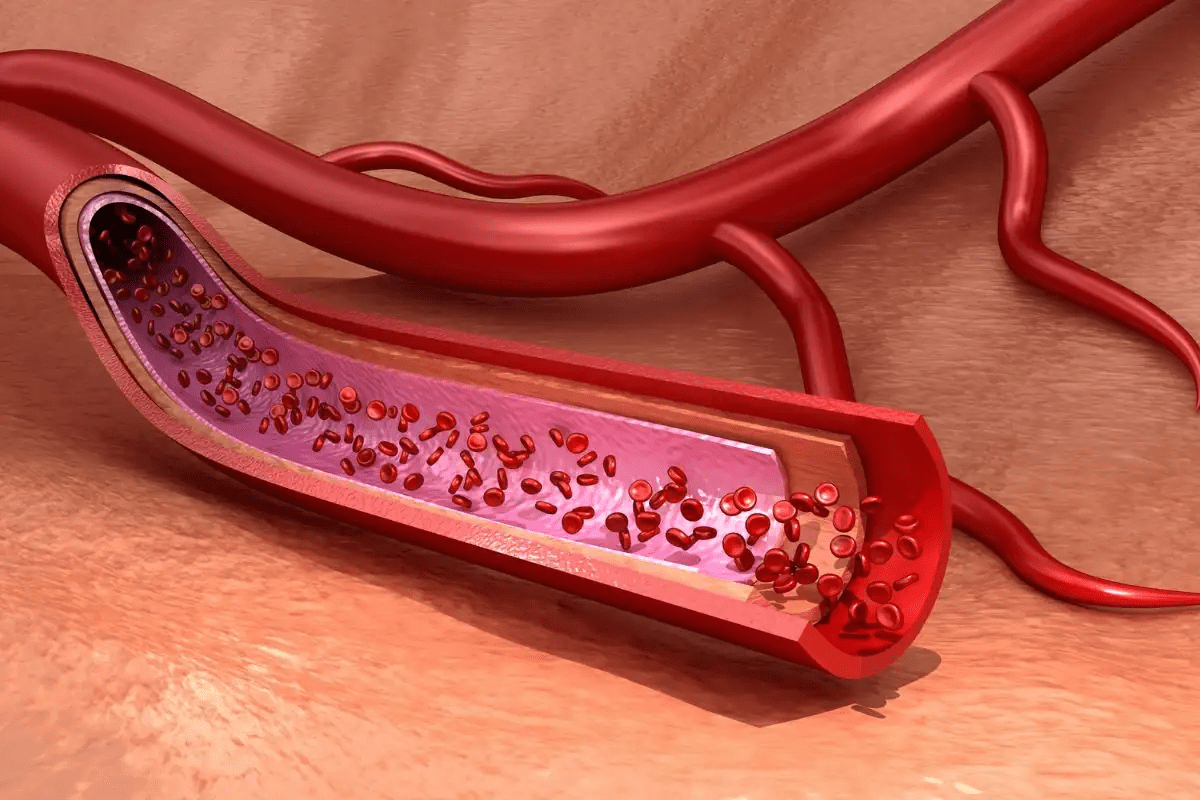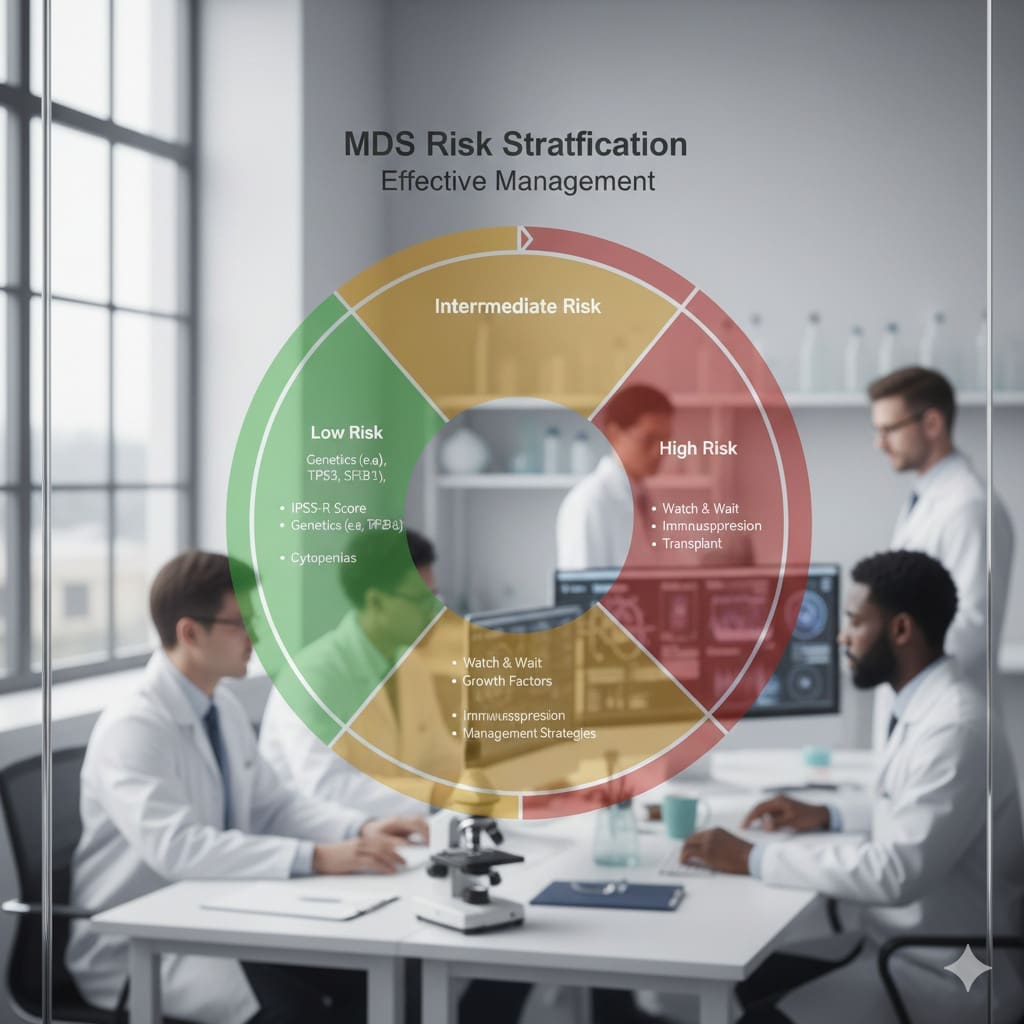Last Updated on November 26, 2025 by Bilal Hasdemir

Ovarian cancer often starts with small symptoms, like pain in specific areas of the body. Knowing where this pain is can help find it early and treat it well. The pain from this disease can change, but it usually hits the abdomen or pelvic area. Spotting these pain locations is key to better health. In some cases, women with ovarian cysts also experience digestive symptoms such as diarrhea, showing a connection between ovarian cysts and gastrointestinal changes. Knowing about ovarian cyst and diarrhea alongside pain locations helps people get medical help fast, which can make a big difference in outcomes.
Key Takeaways
- Ovarian cancer pain is often felt in the abdomen or pelvic area.
- Early detection is key for good treatment.
- Recognizing pain locations can significantly improve health outcomes.
- Quick medical help can lead to better results.
- Understanding ovarian cancer pain is essential for women’s health.
Understanding Ovarian Cancer and Its Symptoms
Ovarian cancer is a serious disease that affects many women. It’s important to know about its types, symptoms, and risk factors. This knowledge helps in early detection and treatment.
What is Ovarian Cancer?
Ovarian cancer starts in the ovaries, which are part of the female reproductive system. These organs produce eggs. The cancer can begin in different types of cells in the ovaries.
Types of Ovarian Cancer
The main types are epithelial ovarian cancer, germ cell tumors, and sex cord-stromal tumors. Each type starts in a different part of the ovary.
Prevalence and Risk Factors
Ovarian cancer is a leading cause of death in women. Risk factors include family history, genetic mutations like BRCA1 and BRCA2, age, and reproductive history.
Common Symptoms Beyond Pain
Common symptoms include bloating, abdominal swelling, and trouble eating. Changes in urination habits are also symptoms. These symptoms can be hard to diagnose because they are often vague.
Why Pain Location Matters for Diagnosis
The location and type of pain can help diagnose ovarian cancer. Pain can occur in the pelvis, abdomen, or lower back. Knowing these patterns is key for early detection.
Ovarian Cancer Pain Location: A Comprehensive Map

Ovarian cancer pain can show up in different parts of the body. It’s important to know where it usually happens. The pain can be in the abdomen, pelvis, lower back, and even in the legs. Knowing these patterns helps doctors diagnose and treat the disease.
Primary Areas Where Pain Occurs
The main places where ovarian cancer pain happens are the pelvic area, lower abdomen, and lower back. These spots are close to where the ovaries are and where cancer might spread.
How Pain Patterns May Develop
Pain from ovarian cancer can change as the disease grows. At first, pain might just be in the pelvic area. But it can spread to the abdomen and lower back later on.
Bilateral vs. Unilateral Pain
Ovarian cancer pain can be either bilateral (on both sides) or unilateral (on one side). Knowing if the pain is on both sides or just one can help doctors figure out how far and where the cancer is.
| Pain Location | Characteristics |
| Pelvic Region | Persistent pain or pressure |
| Lower Abdomen | Bloating or discomfort |
| Lower Back | Dull ache or sharp pain |
Pelvic and Lower Abdominal Pain in Ovarian Cancer
Pelvic and lower abdominal pain are key signs of ovarian cancer. These symptoms are often subtle. Spotting them early is vital for quick diagnosis and treatment.
Pelvic Pain as a Key Symptom
Pelvic pain is a common symptom of ovarian cancer. It feels like a dull ache or pressure in the pelvic area. This pain can be constant or come and go, getting worse over time.
Characteristics of Ovarian Cancer Pelvic Pain
The pain from ovarian cancer can feel different for everyone. Some women might have sharp pains, while others feel a dull ache all the time. The pain can spread to the lower back or thighs too.
| Characteristics | Description |
| Nature of Pain | Dull ache or sharp pains |
| Duration | Persistent or intermittent |
| Radiation | Lower back, thighs |
Lower Abdominal Pressure and Discomfort
Women with ovarian cancer often feel lower abdominal pressure and discomfort. This can feel like a heavy or full feeling in the belly. It might also cause bloating or swelling.
Pain Near the Ovaries
Pain near the ovaries, usually on one side of the lower abdomen, can be an early sign. It might be mistaken for other issues like ovarian cysts or menstrual cramps. This shows why a detailed medical check is so important.
Upper and Mid-Abdominal Pain Manifestations

Ovarian cancer is often linked to pelvic pain. But, it can also cause pain in the upper abdomen. This is less common and might lead to a late diagnosis because it’s not a typical sign of ovarian cancer.
Stomach Pain as an Ovarian Cancer Sign
Stomach pain or discomfort can be a sign of ovarian cancer. But, it’s not as well-known as pelvic pain. This pain might come from the tumor growing or cancer spreading to nearby areas.
Diffuse Abdominal Discomfort
Some women with ovarian cancer feel a general pain or discomfort in their abdomen. This pain is not focused in one spot. It can be hard to diagnose because it looks like other stomach problems.
Rib and Upper Abdominal Pain in Advanced Cases
In later stages, ovarian cancer can cause pain in the upper abdomen or even the ribs. This happens when cancer spreads to the upper abdomen or diaphragm. Such pain usually means the cancer is more advanced.
| Pain Location | Possible Cause | Stage of Cancer |
| Upper Abdomen | Tumor growth or metastasis | Advanced |
| Stomach Area | Cancer spread or pressure | Progressive |
| Rib Area | Metastasis to diaphragm | Advanced |
Back, Side, and Hip Pain Related to Ovarian Cancer
It’s important to know how ovarian cancer can cause pain in the back, sides, and hips. This pain comes from the tumor growing and affecting nearby tissues and organs.
Lower Back Pain Patterns
Lower back pain is common in ovarian cancer patients. This pain can be constant and get worse over time. It might feel like a dull ache or a sharp pain.
The pain can be on one side or both sides of the lower back.
Side Pain with Ovarian Cancer
Side pain from ovarian cancer happens when the tumor grows and presses on nearby structures. This discomfort or pain can be a sign of advanced disease.
Hip Pain as a Symptom
Hip pain is another symptom of ovarian cancer. This pain can be due to the cancer spreading to the pelvic area or affecting nerves that go to the hip.
Distinguishing from Arthritis and Other Conditions
It’s key to tell ovarian cancer pain from arthritis. Arthritis causes joint pain and stiffness. But ovarian cancer pain is more constant and might come with bloating and swelling in the belly.
| Pain Location | Characteristics | Possible Causes |
| Lower Back | Persistent, dull ache or sharp pain | Tumor growth, pressure on surrounding tissues |
| Sides | Discomfort or pain due to tumor size and location | Tumor pressing against surrounding structures |
| Hips | Radiating pain to the hip area | Cancer spread to pelvic region or nerve compression |
Less Common Pain Locations
Ovarian cancer often causes pain in the abdomen. But, it can also cause discomfort in other areas. Knowing about these spots can help find and treat the cancer early.
Groin Discomfort and Referred Pain
The groin area is a less common spot for pain from ovarian cancer. This pain might feel like it’s coming from somewhere else. It happens because the ovaries are close to the groin. Ovarian cancer groin discomfort is a symptom that should not be ignored.
Pain in Legs and Thighs
Pain in the legs and thighs can also be a sign of ovarian cancer, mainly in later stages. The tumor can press on nerves, causing pain that spreads to the legs. Ovarian cancer pain in legs and thighs is hard to diagnose because it can look like other problems.
Unusual Pain Locations in Advanced Disease
In later stages, ovarian cancer can cause pain in unexpected places. This includes the upper abdomen, back, or even unusual pain locations like the shoulders or ribs. Spotting these unusual pain patterns is key to managing the disease well.
Ovarian Cancer Pain Characteristics
It’s important to know about ovarian cancer pain to catch it early and manage it well. Ovarian cancer pain can show up in many ways. It’s key to spot its different types and patterns.
Bloating and Pain Combination
Bloating and pain together are big signs of ovarian cancer. Bloating feels like your belly is always full or swollen. When you also feel pain, it’s a strong clue about ovarian cancer. The pain can be mild or very bad.
It’s vital to tell normal bloating from the kind linked to ovarian cancer. Normal bloating happens sometimes, but severe and constant bloating with pain means you should see a doctor.
Persistent vs. Intermittent Symptoms
Ovarian cancer pain can stay the same or change. Persistent pain is always there, while intermittent pain comes and goes. Knowing the type of pain helps doctors figure out what’s wrong.
| Pain Type | Characteristics |
| Persistent Pain | Constant, ongoing discomfort or pain |
| Intermittent Pain | Pain that comes and goes, varying in intensity |
Pain Intensity and Progression
The pain from ovarian cancer can be different for everyone. It can be mild or very bad and get worse if not treated.
When Pain Worsens and What It Means
If ovarian cancer pain gets worse, it might mean the disease is getting worse too. Increased pain intensity or new pain locations are signs the cancer is spreading. Always tell your doctor if your pain changes.
Knowing about ovarian cancer pain is key to getting help fast. By understanding the different kinds of pain, people can get the right care and maybe do better.
Pain Differences by Cancer Stage
The stage of ovarian cancer greatly affects the pain patients feel. As the disease gets worse, the pain’s type and where it hurts can change. This helps doctors figure out what’s wrong and how to treat it.
Early Stage Ovarian Cancer Pain Areas
In the early stages, pain might be mild and hard to notice. It often feels like something less serious. People might feel pain in their pelvic area or lower belly.
Subtle Signs Often Missed
Pain in early ovarian cancer can be light and come and go. It might feel like a slight ache in the pelvis or sharp pains in the lower belly. These symptoms don’t always point to ovarian cancer right away.
Late Stage Ovarian Cancer Pain Spread
When ovarian cancer gets worse, pain can spread and get stronger. The cancer might move to other parts of the belly. This can cause pain in the upper belly and even in the back and sides.
Metastatic Disease and New Pain Locations
In metastatic ovarian cancer, pain can show up in new places. This happens when cancer spreads to other organs. Places like the peritoneum, bowel, and distant organs can cause different kinds of pain.
| Cancer Stage | Common Pain Locations | Pain Characteristics |
| Early Stage | Pelvic region, lower abdomen | Mild, intermittent |
| Late Stage | Upper abdomen, back, sides | More intense, widespread |
| Metastatic | Variable, depending on metastasis site | Diverse pain patterns |
Distinguishing from Other Conditions
It’s important to know the difference between ovarian cancer pain and other similar conditions. This can help get the right treatment quickly. Ovarian cancer pain can be mistaken for menstrual cramps, IBS, and other gynecological issues, making diagnosis hard.
Ovarian Cancer Pain vs. Period Cramps
Ovarian cancer pain and menstrual cramps can feel similar because they both cause pelvic discomfort. But menstrual cramps usually follow a menstrual cycle. Ovarian cancer pain, on the other hand, is constant and not tied to the cycle. Paying attention to the timing and persistence of pain can help tell them apart.
Ovarian Cancer Pain vs. IBS Pain
IBS can cause abdominal pain and bloating, similar to ovarian cancer. But IBS pain is often linked to bowel movements and bowel habit changes. Ovarian cancer pain is more constant and not directly related to digestion.
Differentiating from Other Gynecological Conditions
Other gynecological conditions like endometriosis, ovarian cysts, and pelvic inflammatory disease can also cause pelvic pain. This makes it hard to diagnose ovarian cancer just by looking at pain.
Endometriosis and Ovarian Cysts
Endometriosis causes pain because tissue like the uterus lining grows outside the uterus. Ovarian cysts are fluid-filled sacs on the ovaries that can cause pain if they rupture or twist. While these conditions are painful, the pain’s nature and progression can differ from ovarian cancer pain.
Pelvic Inflammatory Disease
Pelvic inflammatory disease is an infection of the female reproductive organs. It causes pelvic pain and is often linked with fever and other infection symptoms. Unlike ovarian cancer, PID is usually accompanied by abnormal vaginal discharge and can be caused by sexually transmitted infections.
To tell ovarian cancer pain from these conditions, a detailed medical check-up is needed. This includes imaging tests and biopsies. Knowing the small differences in pain and symptoms is key for accurate diagnosis.
Conclusion: Recognizing and Responding to Ovarian Cancer Pain
It’s very important to spot ovarian cancer pain early. Knowing how this pain shows up can help patients get better faster.
Ovarian cancer pain can hurt in many places. This includes the pelvic area, lower belly, back, and sometimes the groin or legs. Knowing where and how this pain feels is key to acting fast.
Being aware of where and how ovarian cancer pain can show up helps people get help quickly. This quick action is vital for better treatment and results.
Doctors also have a big role in spotting ovarian cancer pain. They need to know how to tell it apart from other pains. This helps them treat it right and improve patients’ lives.
FAQ
Where does ovarian cancer pain typically start?
Ovarian cancer pain usually starts in the pelvic area, lower abdomen, or lower back. It can feel like a dull ache or a sharp stabbing pain.
What are the common symptoms of ovarian cancer beyond pain?
Symptoms include bloating, swelling in the abdomen, trouble eating, and needing to urinate often.
How does ovarian cancer pain differ from period cramps?
Ovarian cancer pain is usually more severe and lasts longer than period cramps. It’s not tied to the menstrual cycle.
Can ovarian cancer cause upper abdominal pain or rib pain?
Yes, advanced ovarian cancer can cause pain in the upper abdomen or ribs. This is due to the spread of the cancer or growth of tumors.
How does ovarian cancer pain progress over time?
Pain from ovarian cancer starts as mild discomfort. It can become more severe and constant as the disease gets worse.
Can ovarian cancer cause pain in the legs or thighs?
Yes, ovarian cancer can cause pain in the legs or thighs. This happens when the cancer spreads to nerves or tissues in the pelvic area.
How does ovarian cancer pain differ from IBS pain?
Ovarian cancer pain is more severe and lasts longer than IBS pain. It’s often accompanied by bloating and swelling in the abdomen.
What is the difference between early-stage and late-stage ovarian cancer pain?
Early-stage pain is mild and local. Late-stage pain is more severe and widespread due to tumor growth and spread.
Can ovarian cancer cause groin discomfort or referred pain?
Yes, ovarian cancer can cause discomfort or referred pain in the groin. This is because of the cancer’s location near the groin or surrounding nerves.
How can I distinguish ovarian cancer pain from other gynecological conditions?
It’s important to see a healthcare provider for a proper diagnosis. Ovarian cancer pain can be similar to other conditions like endometriosis or fibroids.
What are the characteristics of ovarian cancer pain?
Ovarian cancer pain is persistent, severe, and can get worse over time. It’s often accompanied by symptoms like bloating and swelling in the abdomen.
References
- National Cancer Institute. (2023). Ovarian, fallopian tube, and primary peritoneal cancer”Patient version.






